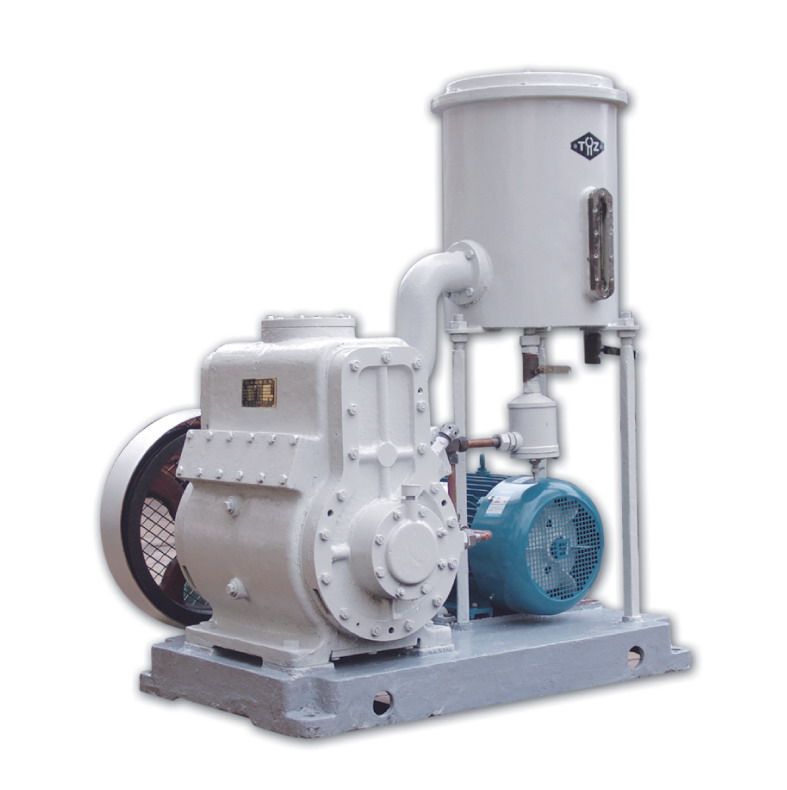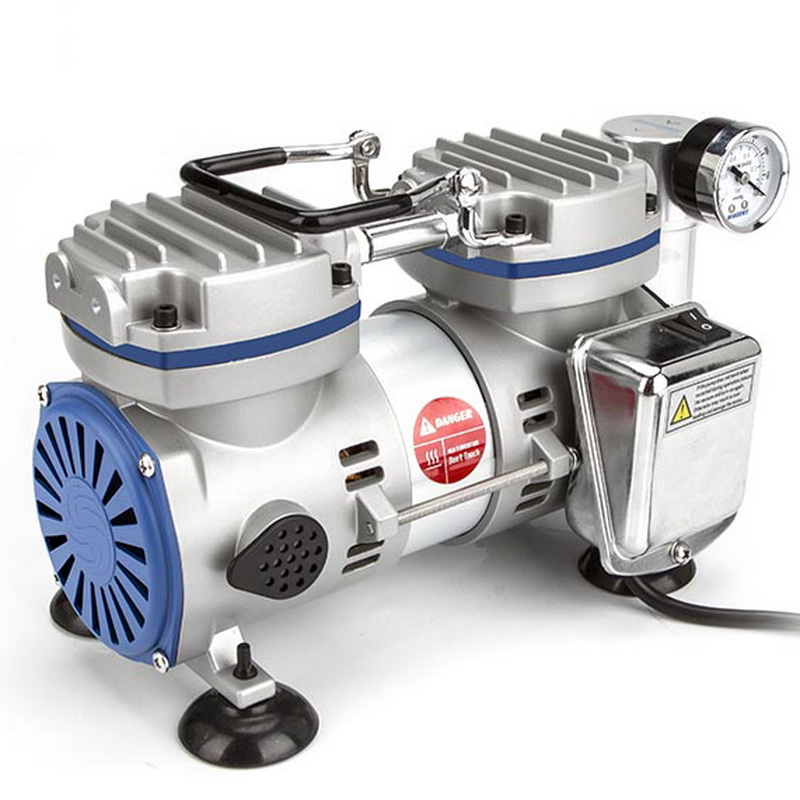Product Description
Product Description
SK series water ring vacuum spring and compressor is used to suck or compress air and other non-corrosive, insoluble in water, does not contain CZPT particles of the gas body, in order to form a vacuum and pressure in a closed container, suction gas allowed to mix a small amount of liquid.
Scope of application
SK water ring vacuum pumps and compressors are widely used in machinery, petrochemical, pharmaceutical, food, sugar industry and electronic fields. Because in the working process, the gas compression process is isothermal, so in the compression and patting explosive gas, not prone to danger, so its application more widely.
Product Parameters
| Model | Pumping capacity(fTp/min) | Limit pressure of vacuum pump | Motor power (KW) | Pump RPM(r/m) | Compressor pressure | Caliber (mm) | ||||
| Max. | Suction pressure is 0.041 MPa | mmHg | MPa | Vacuum pump | Compressor | In | Out | |||
| SK-0.15 | 0.15 | 0.135 | -650 | -0.087 | 0.55 | 1 | 2860 | / | G3/4″ | G3/4″ |
| SK-0.4 | 0.4 | 0.36 | -650 | -0.087 | 1.5 | 1 | 2860 | 1 | G1″ | G1″ |
| SK-0.8 | 0.8 | 0.72 | -650 | -0.087 | 2.2 | 1 | 2860 | 1 | G1″ | G1″ |
| SK-1.5B | 1.5 | 1.35 | -680 | -0.091 | 4 | 1 | 2860 | / | G1 1/4″ | G1 1/4″ |
| SK-1.5 | 1.5 | 1.35 | -680 | -0.091 | 4 | 4 | 1440 | 0-0.1 | 70 | 70 |
| SK-3 | 3 | 2.8 | -700 | -0.093 | 5.5 | 7.5 | 1440 | 0-0.1 | 70 | 70 |
| SK-6 | 6 | 5.4 | -700 | -0.093 | 11 | 15 | 1460 | 0-0.1 | 80 | 80 |
| SK-9 | 9 | 8.1 | -700 | -0.093 | 15 | 22 | 970 | 0-0.1 | 80 | 80 |
| SK-12 | 12 | 10.8 | -700 | -0.093 | 18.5 | 30 | 970 980 | 0-0.1 | 80 | 80 |
| SK-15 | 15 | 13.5 | -700 | -0.093 | 30 | 45 | 980 | 0-0.1 | 80 | 80 |
| SK-20 | 20 | 18 | -700 | -0.093 | 37 | 55 | 740 | 0-0.1 | 150 | 150 |
| SK-30 | 30 | 27 | -700 | -0.093 | 55 | 75 | 740 | 0-0.1 | 150 | 150 |
| SK-42 | 42 | 37.8 | -700 | -0.093 | 75 | 1 | 740 | 1 | 150 | 150 |
| SK-60 | 60 | 54 | -700 | -0.093 | 90 | 1 | 590 | 1 | 250 | 250 |
| SK-85 | 85 | 76.5 | -700 | -0.093 | 132 | 1 | 590 | 1 | 250 | 250 |
| SK-120 | 120 | 108 | -700 | -0.093 | 185 | 1 | 490 | 1 | 300 | 300 |
Noted:
1. Intramuscular values are derived under the following conditions:
Atmospheric pressure 0.1013MPa
The water temperature is 15°C
The air temperature is 20°C
Relative humidity of gas 70%
2. The deviation of pumping volume is not more than ±10%
Detailed Photos
Customer usage display
Certifications
Factory overview
Warehouse overview
/* January 22, 2571 19:08:37 */!function(){function s(e,r){var a,o={};try{e&&e.split(“,”).forEach(function(e,t){e&&(a=e.match(/(.*?):(.*)$/))&&1
| Warranty: | 1 Years |
|---|---|
| Oil or Not: | Oil Free |
| Structure: | Rotary Vacuum Pump |
| Exhauster Method: | Kinetic Vacuum Pump |
| Vacuum Degree: | High Vacuum |
| Work Function: | Mainsuction Pump |
| Customization: |
Available
|
|
|---|

Can Piston Vacuum Pumps Create a Deep Vacuum?
Yes, piston vacuum pumps have the capability to create a deep vacuum. Here’s a detailed explanation:
Piston vacuum pumps are designed to generate and maintain a vacuum by using a reciprocating piston mechanism. They can achieve vacuum levels ranging from millitorr (10-3 Torr) to microns (10-6 Torr), which is considered a deep vacuum range.
When the piston moves downward during the suction stroke, it creates a vacuum within the cylinder. This allows gas or air from the system being evacuated to enter the cylinder. As the piston moves up during the compression stroke, the gas is expelled from the cylinder, reducing its volume and increasing its pressure. This cyclic process continues, gradually reducing the pressure within the system.
One of the factors that contribute to the ability of piston vacuum pumps to create a deep vacuum is the use of an airtight seal between the piston and cylinder walls. This seal prevents the gas from leaking back into the evacuated system, allowing the pump to maintain the desired vacuum level.
It’s important to note that the achievable vacuum level of a piston vacuum pump can depend on various factors, including the design of the pump, the materials used, the quality of the seals, and the operating conditions. Additionally, the flow rate of the pump may be lower compared to other types of vacuum pumps, as piston pumps are typically designed for applications that require low flow rates but high vacuum levels.
In summary, piston vacuum pumps can create a deep vacuum in the millitorr to micron range. With their reciprocating piston mechanism and airtight seals, they are capable of generating and maintaining a vacuum suitable for applications that require deep vacuum conditions.

How Does the Cost of Piston Vacuum Pumps Compare to Other Types?
The cost of piston vacuum pumps can vary depending on factors such as the pump’s size, capacity, features, and the specific manufacturer or supplier. Here’s a detailed explanation of how the cost of piston vacuum pumps compares to other types:
– Piston vacuum pumps generally fall into the mid to high range in terms of cost compared to other types of vacuum pumps.
– Compared to rotary vane pumps, which are another common type of vacuum pump, piston pumps are often more expensive.
– This higher cost can be attributed to several factors:
– Design and Construction: Piston vacuum pumps typically have a more complex design and construction, involving precision machining and tighter tolerances. This can contribute to higher manufacturing costs.
– Performance and Features: Piston pumps often offer higher performance and greater pumping capacity compared to other types of pumps. They may also incorporate additional features such as variable speed control or advanced control systems, which can increase the cost.
– Robustness and Durability: Piston pumps are known for their durability and ability to handle demanding applications. They are designed to withstand high pressures and heavy-duty operation, which can contribute to their higher cost.
– On the other hand, when compared to more specialized or advanced vacuum pump technologies such as turbomolecular pumps or cryogenic pumps, piston vacuum pumps are generally more cost-effective.
– Turbomolecular pumps, which are used in high-vacuum applications, are typically more expensive due to their complex design, high rotational speeds, and advanced materials used.
– Cryogenic pumps, which rely on extremely low temperatures for vacuum creation, are also typically more expensive due to the specialized cooling systems and cryogenic components involved.
– It’s important to note that the cost of any vacuum pump can also vary depending on factors such as the required pumping capacity, ultimate vacuum level, and specific industry or application requirements.
– When considering the cost of a piston vacuum pump, it is crucial to assess the overall value it provides in terms of performance, reliability, durability, and suitability for the intended application.
– Additionally, factors such as maintenance requirements, energy efficiency, and the availability of spare parts and service support should also be taken into account when evaluating the cost-effectiveness of a piston vacuum pump.
In summary, piston vacuum pumps generally fall into the mid to high range in terms of cost compared to other types of vacuum pumps. While they may be more expensive than rotary vane pumps, they are often more cost-effective compared to specialized technologies such as turbomolecular pumps or cryogenic pumps. The specific cost of a piston vacuum pump can vary based on factors such as size, capacity, features, and manufacturer.

How Do You Maintain and Service a Piston Vacuum Pump?
Maintaining and servicing a piston vacuum pump is essential to ensure its optimal performance and longevity. Here’s a detailed explanation:
1. Regular Inspection:
– Perform regular visual inspections of the pump to check for any signs of damage, leaks, or wear.
– Inspect the seals, gaskets, and fittings for any cracks or deterioration.
– Ensure that all connections are tight and secure.
2. Oil Change:
– Piston vacuum pumps typically require regular oil changes to maintain proper lubrication and prevent contamination.
– Follow the manufacturer’s guidelines regarding the frequency of oil changes.
– Drain the old oil completely and replace it with the recommended oil type and quantity.
– Dispose of the used oil according to proper environmental regulations.
3. Filter Replacement:
– Many piston vacuum pumps have filters to prevent dust, particles, and contaminants from entering the pump.
– Check the filter regularly and replace it as needed to maintain proper airflow and prevent clogging.
4. Cleaning:
– Keep the exterior of the pump and its surrounding area clean and free from debris.
– Use a soft cloth or brush to remove any dust or dirt accumulation.
– Avoid using harsh chemicals or solvents that may damage the pump’s surfaces.
5. Seals and Gaskets:
– Inspect the seals and gaskets regularly and replace them if they show signs of wear or damage.
– Ensure that the seals provide a proper airtight seal to prevent leaks and maintain vacuum performance.
6. Cooling System:
– If the piston vacuum pump has a cooling system, monitor it regularly to ensure proper functioning.
– Clean or replace the cooling system components as recommended by the manufacturer.
7. Professional Maintenance:
– Consider scheduling professional maintenance and service at regular intervals, especially for more complex or critical applications.
– Professional technicians can perform in-depth inspections, conduct performance tests, and address any specific issues or concerns.
– They can also provide recommendations on optimizing the pump’s performance and extending its lifespan.
8. Manufacturer Guidelines:
– Always refer to the manufacturer’s maintenance and service guidelines specific to your piston vacuum pump model.
– Follow their recommendations regarding oil type, oil level, maintenance intervals, and any other specific instructions.
– Adhering to the manufacturer’s guidelines ensures proper operation and prevents voiding the warranty.
In summary, maintaining and servicing a piston vacuum pump involves regular inspection, oil changes, filter replacement, cleaning, checking seals and gaskets, monitoring the cooling system, and considering professional maintenance. Following the manufacturer’s guidelines is crucial for effective maintenance and to maximize the pump’s performance and lifespan.


editor by CX 2024-04-16
by
Tags:
Leave a Reply